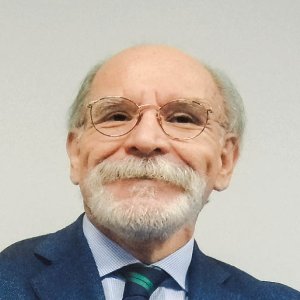Innovation to Address Health Challenges

STORY INLINE POST
Q: How does Fundación Carlos Slim help to reduce the burden of healthcare?
A: The foundation is a catalyst for the implementation of innovations that address the most pressing public health challenges and that later spur transformation of public policies, with the support of leading national and international organizations and through the convening of public-private partnerships.
Q: How is technology changing healthcare practices?
A: With the advent of the fourth industrial revolution, we see four trends in technology that converge and impact healthcare: innovations in diagnostics with the revolution of genomics and metabolomics, massive adoption of mobile technologies, an enhanced use of low-cost IoT-backed technologies and artificial intelligence (AI) and cognitive computing.
This convergence gives way to digital health and its greatest impact is observed on the implementation of Personalized Public Health, a term we have coined that is characterized by proactive prevention and includes new diagnostic methods alongside effective implementation outreach strategies. These enable health professionals to detect and diagnose risk factors and their predecessor conditions, such as prediabetes, and continuum of care through the implementation of a stepwise strategy from detection of a disease, confirmation and incorporation to disease management and home monitoring using IoT portable medical devices.
Q: How is Fundación Carlos Slim changing healthcare practices?
A: Our goal is to provide effective care throughout the continuum of care and its different platforms, from the community and primary health clinics to general and tertiary hospitals. Appropriate follow-ups need to be provided with the collaboration of health professionals and patients themselves. To do so, we launched CASALUD, a model that has received international recognition for its visionary approach to care.
We also conduct reviews of innovative breakthroughs from around the world and analyze which ones can be implemented in Mexico, taking three criteria into consideration: costeffectiveness, operational feasibility and impact on burden of disease. Our objective is to optimize the base of the pyramid by improving clinics’ public infrastructure. Fundación Carlos Slim’s goal is for people to live longer and better.
Q: How does the foundation support the training and education of health professionals?
A: We developed PIEENSO, a robust online-offline educational platform for physicians, nurses and researchers where they receive state-of-the-art training. We developed the curricula in collaboration with national organizations like the National Institute of Medical Sciences Salvador Zubirán and international counterparts such as the Mayo Clinic and Harvard’s Joslin Diabetes Center, among many others. Our courses are endorsed by the National Autonomous University of Mexico (UNAM). We are mostly concerned with providing health education to the general public, supported by our online platform ClikiSalud.net, which comprises a diverse range of topics concerning the Spanish-speaking population.
Q: How would you describe the progress made by Mexico in terms of maternal and child health and how is the foundation supporting this area?
A: Mexico has made great progress in maternal health but not enough to meet the Millennium Development Goals. Maternal health is a challenge in Mexico, where approximately 25 percent of pregnancies occur in women 18 years old or younger. To address this problem, we developed AMANECE, a strategy that incorporates several innovations that enable the timely identification of a pregnant woman to provide proper prenatal care, and later refer her to a hospital in a coordinated fashion for the delivery of her baby Mexico has been a global leader in vaccination, which should continue. To help the country improve its practices, we developed the Electronic Vaccination Card (Cartilla Electronica de Vacunacion). The goal is for all children under 5 years old to be up to date with their vaccination schedule. This information is linked to their printed book and uploaded to the cloud, which will give health professionals and parents continuous access to this data, helping them to keep up with vaccination schedules in a timely manner.
Q: How is the foundation incorporating research into its practices?
A: For the past eight years, the foundation has studied the genetic background of diabetes and cancer alongside the Broad Institute of Harvard University, the Massachusetts Institute of Technology and leading Mexican research centers. We are identifying the potential impact of several genes on the risk of developing diabetes and we use this information to analyze whether an individual has an increased risk of presenting the disease. We have already developed a first chip to measure the genetic risk of diabetes specifically for the Mexican population and we are in the process of developing two additional chips to measure the genetic risk of cardiometabolic disease and diabetes during pregnancy.
Q: Which other areas should be prioritized to improve the health of Mexicans?
A: In Mexico, the number of organ transplants has not evolved as needed but changes are being implemented to improve it. For instance, Seguro Popular has incorporated liver, kidney and bone marrow transplants into its financial coverage. Our campaign “Heroes for Life” (Héroes por la Vida) promotes organ donation, both from a deceased or a living donor. We are also promoting transplant chains for kidney transplants.
Q: What initiatives is the foundation spearheading to address tropical diseases?
A: In 2012, the Foundation launched the Salud Mesoamérica Initiative alongside the Bill and Melinda Gates Foundation and the Inter-American Development Bank, centered on child nutrition, vaccines and maternal health for the poorest 20 percent of the population in the region. In a new phase, we will work toward the elimination of malaria in Mesoamerica.






















